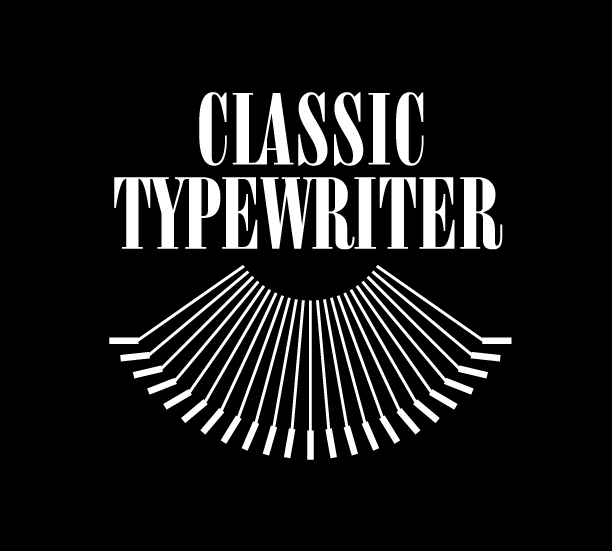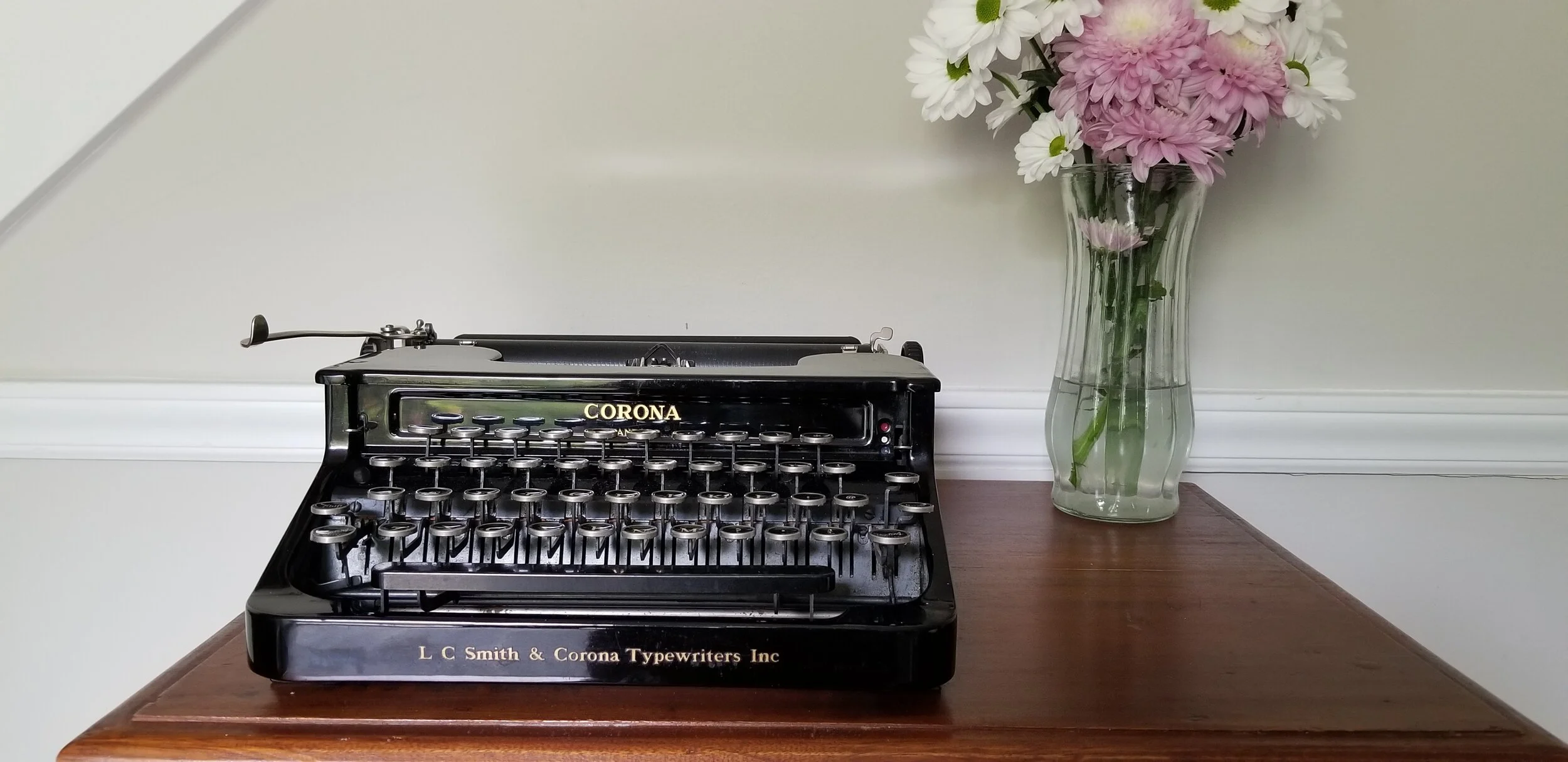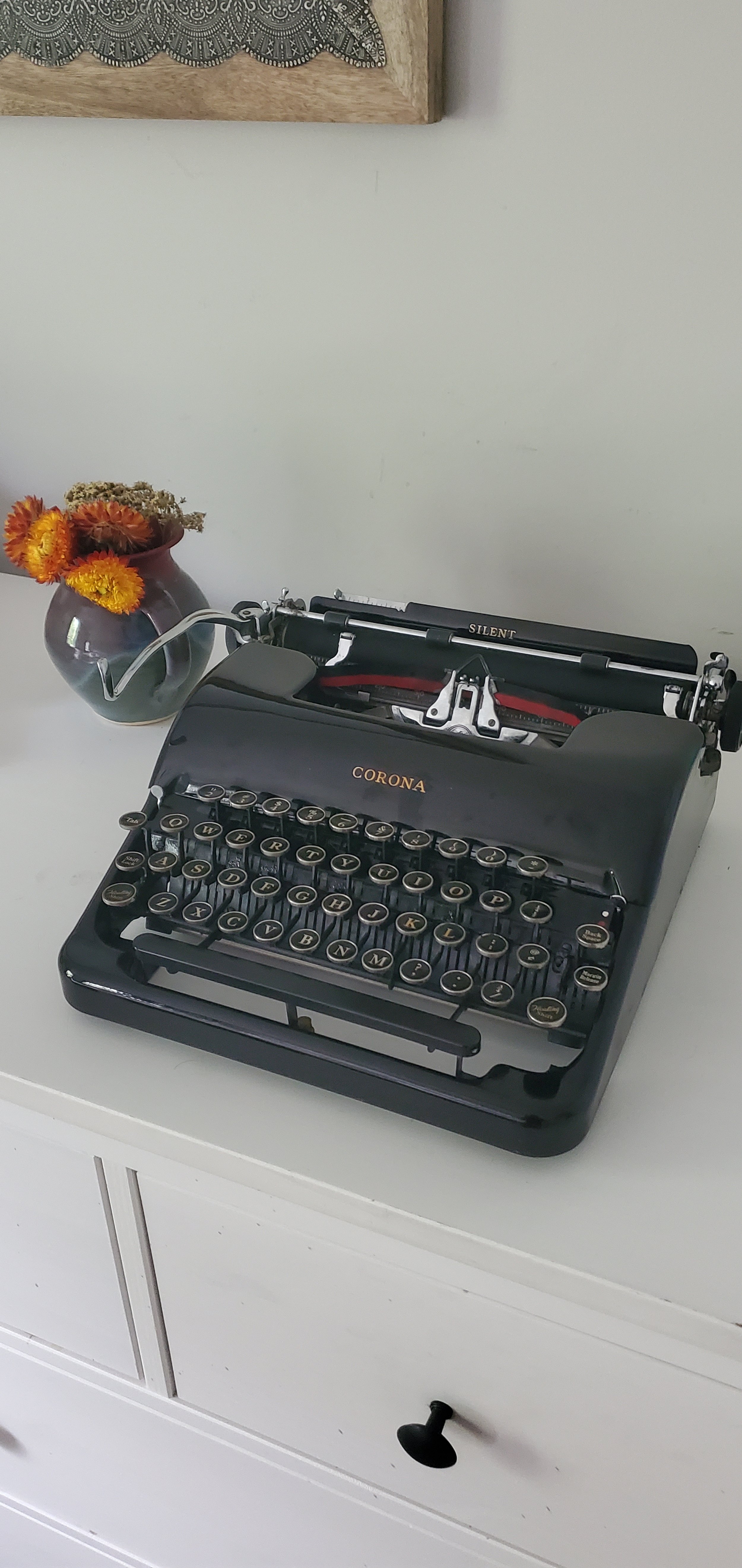Stunning circa 1914 Corona 3 Typewriter with case
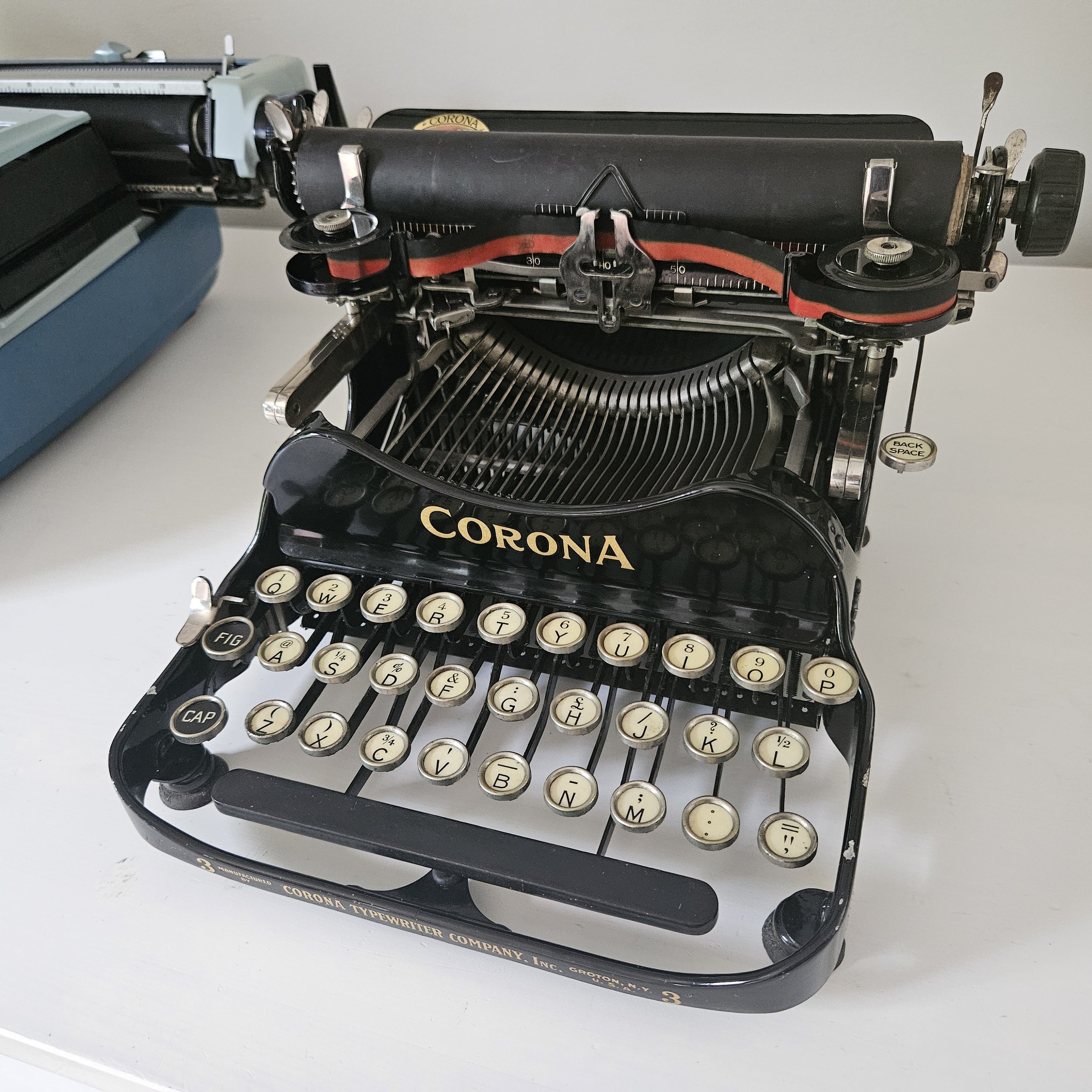

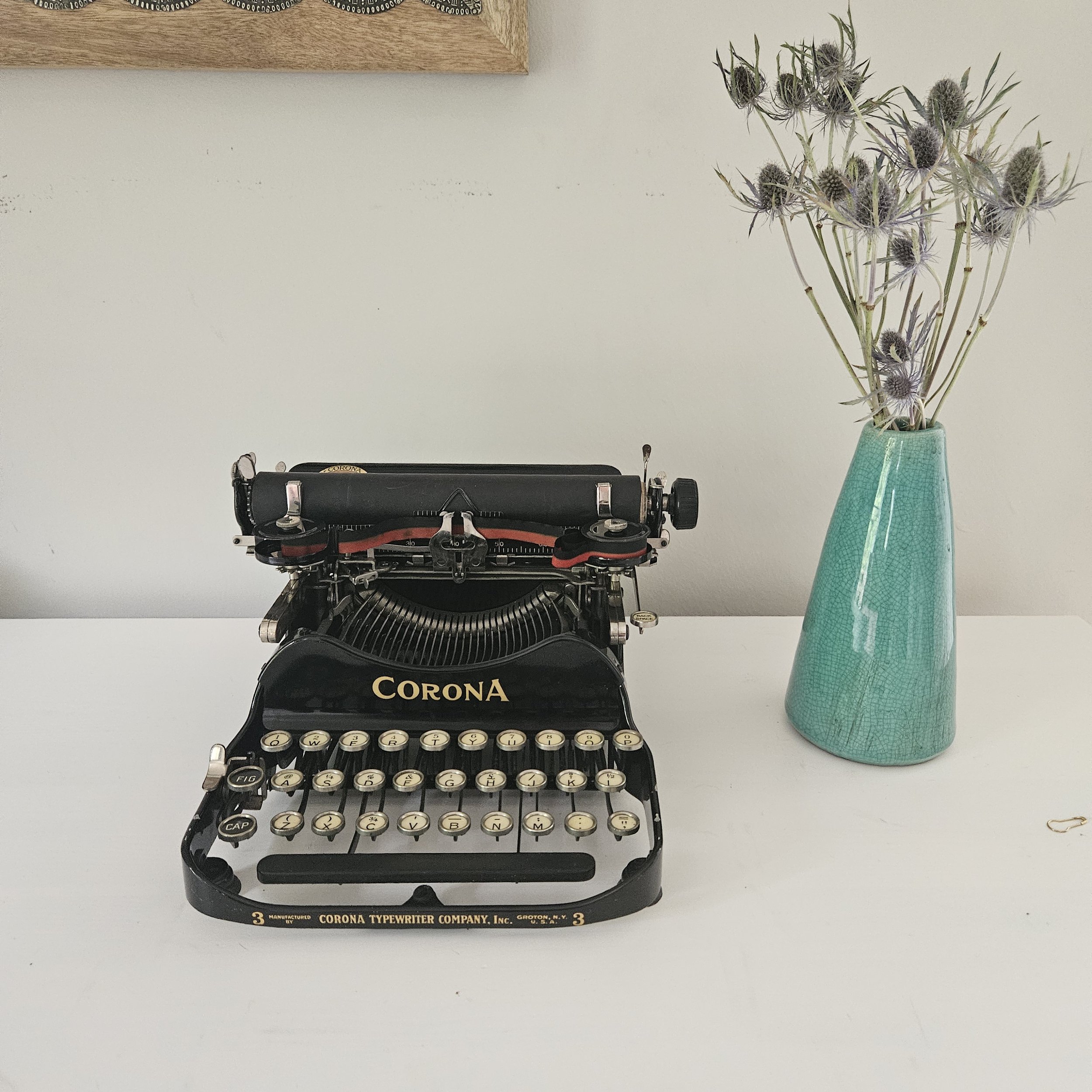
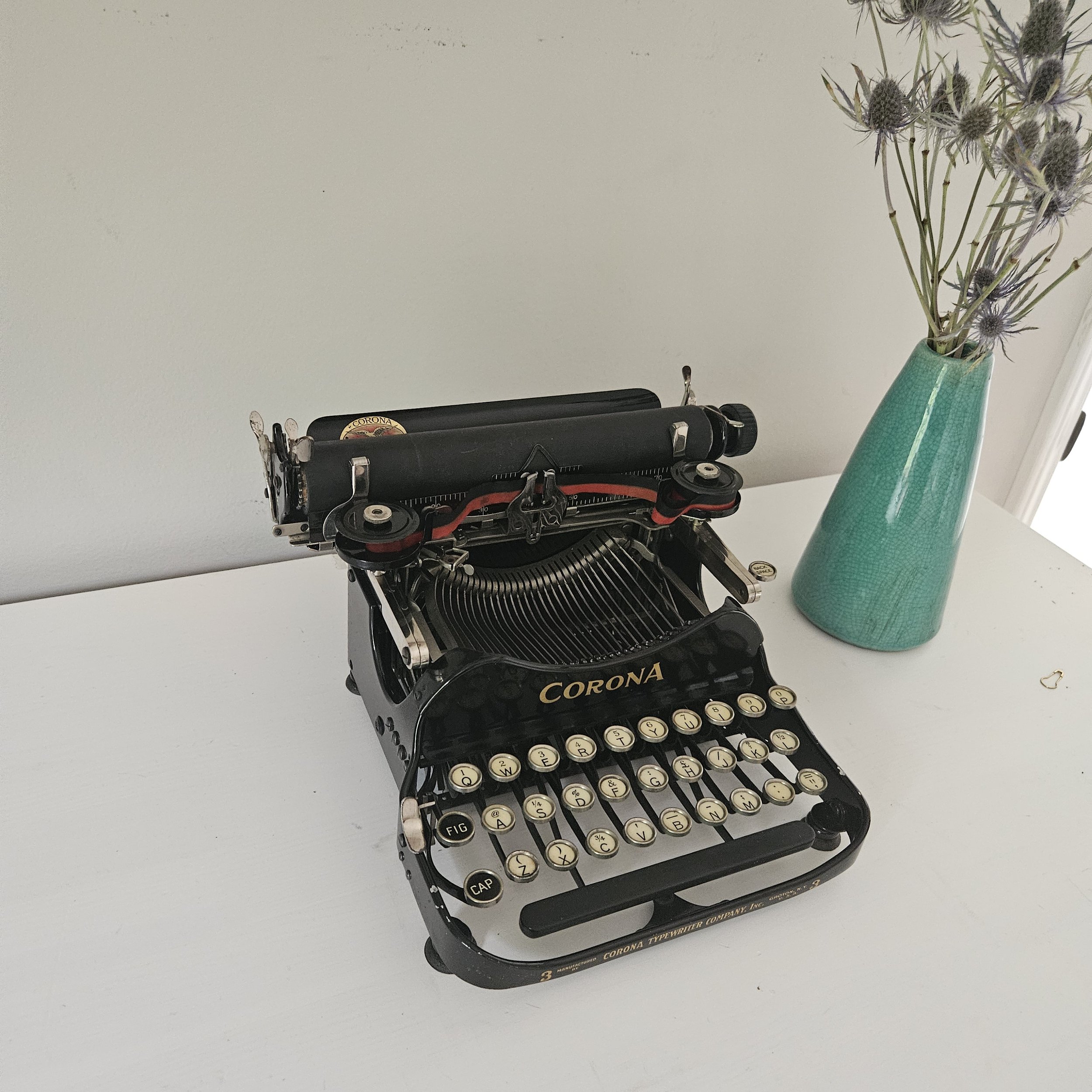
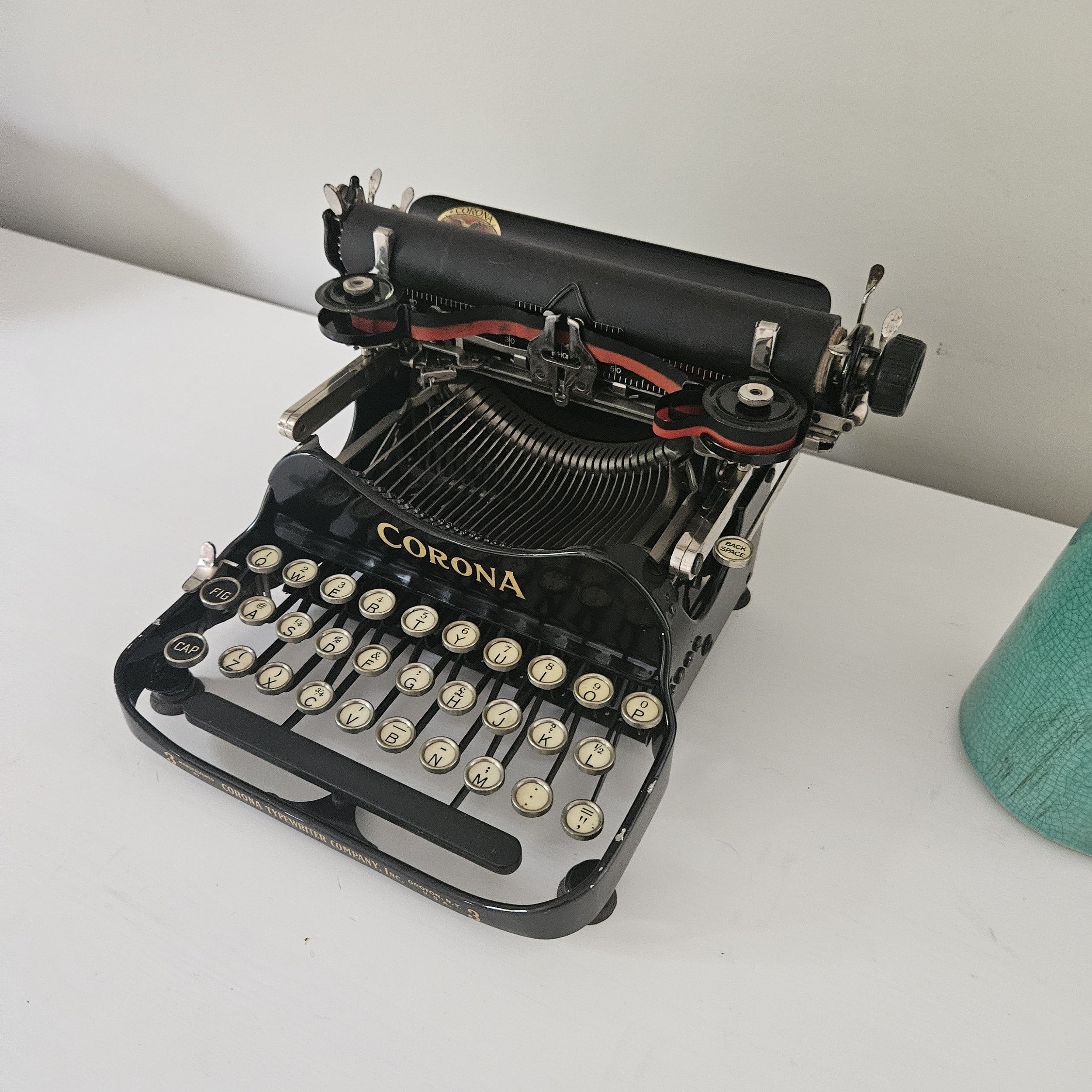
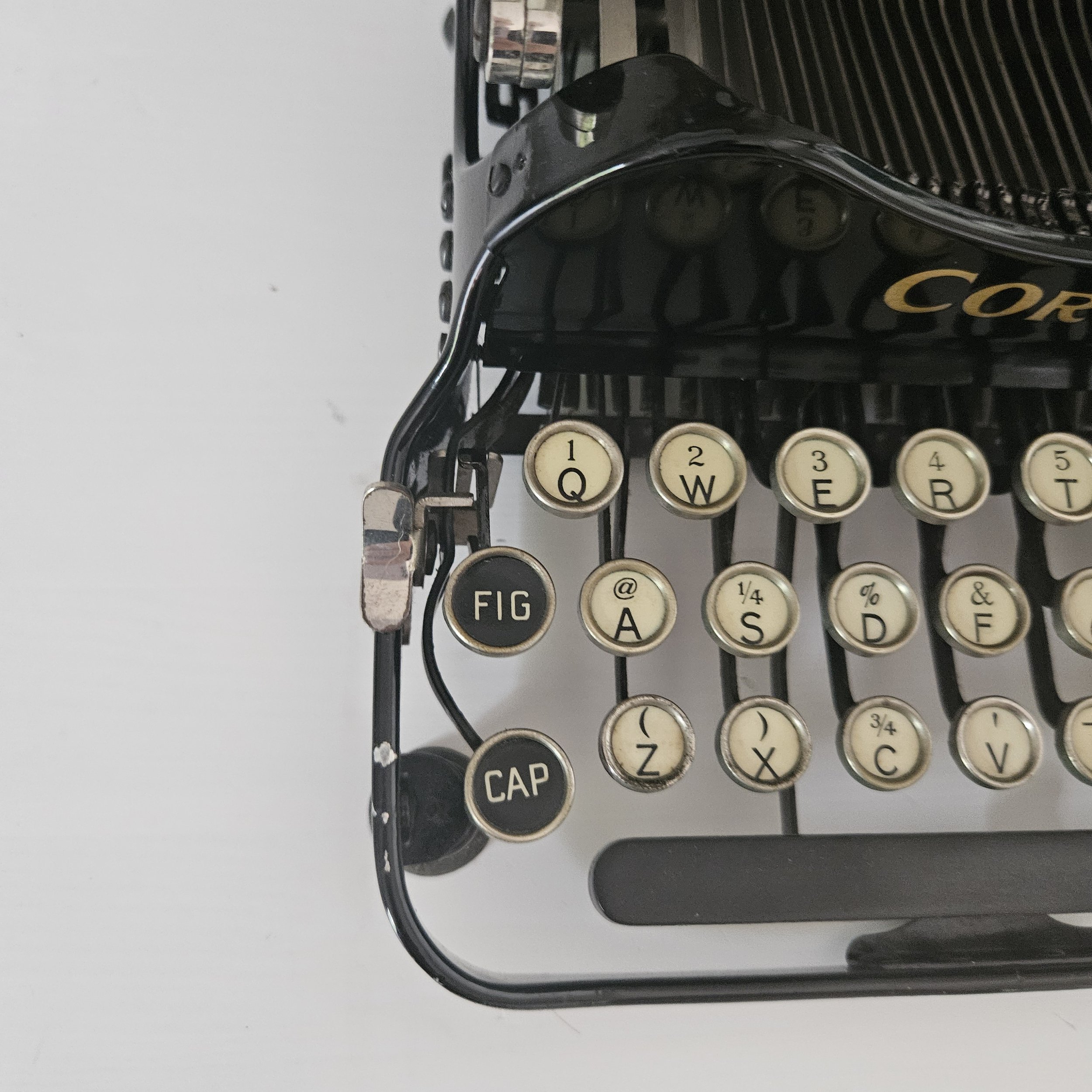

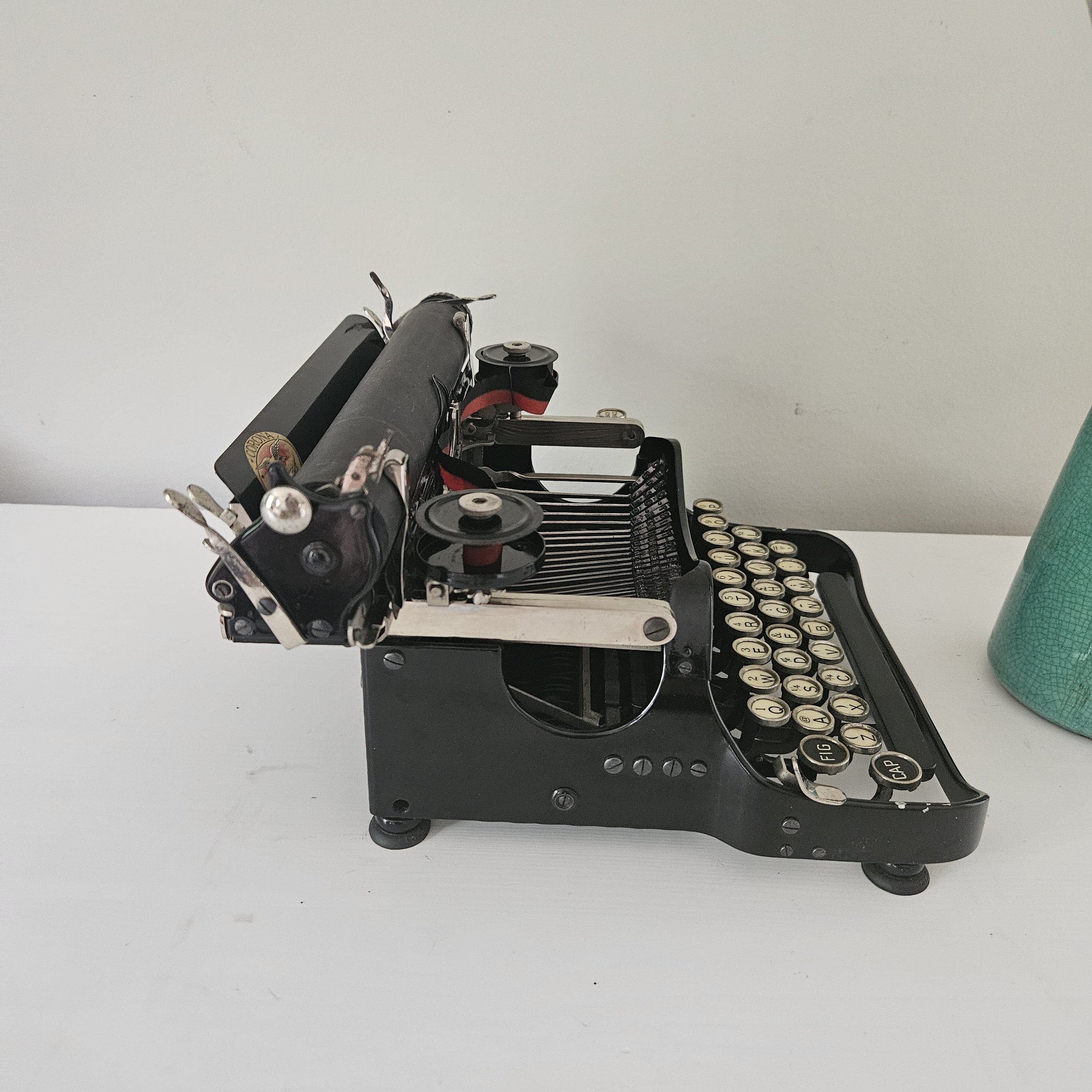

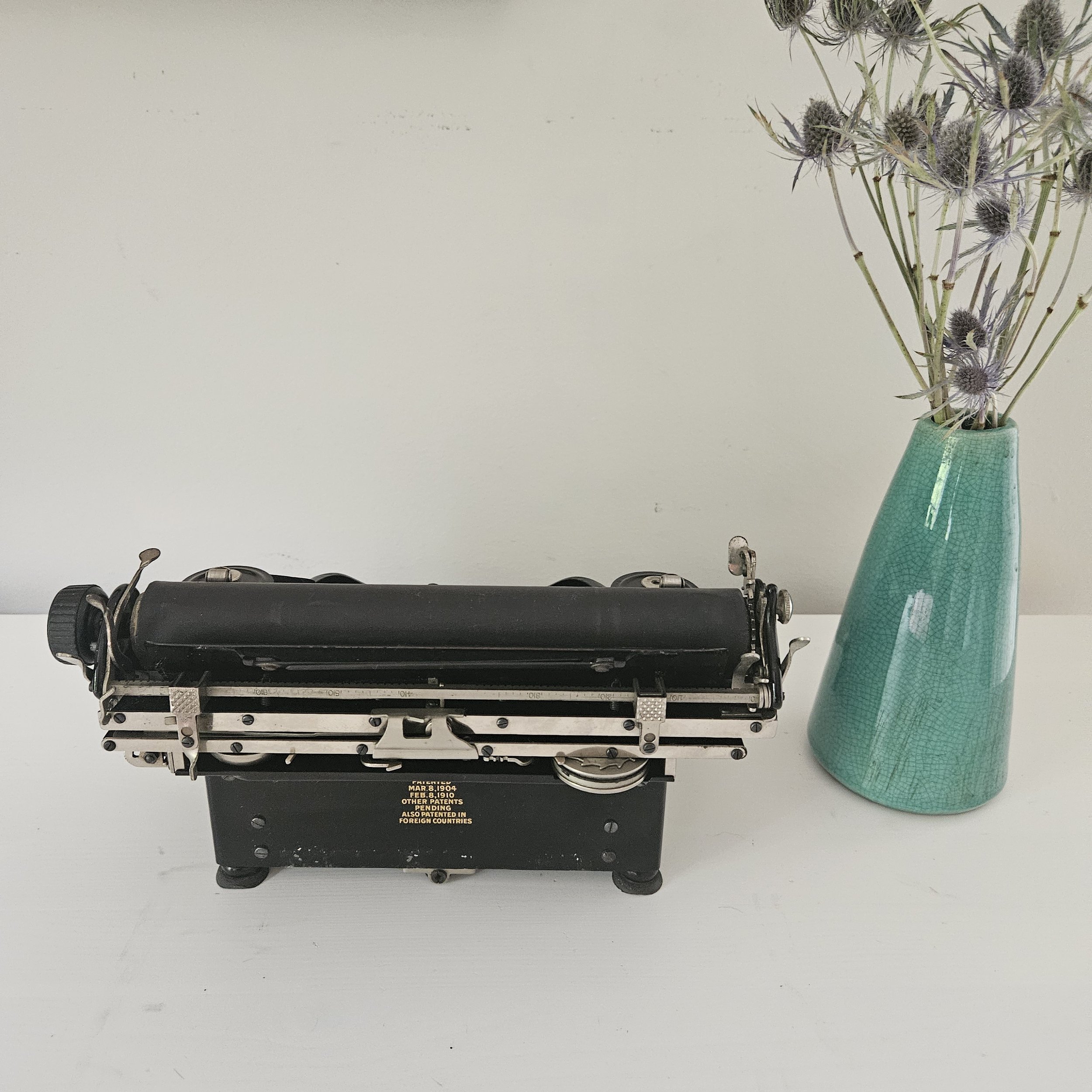


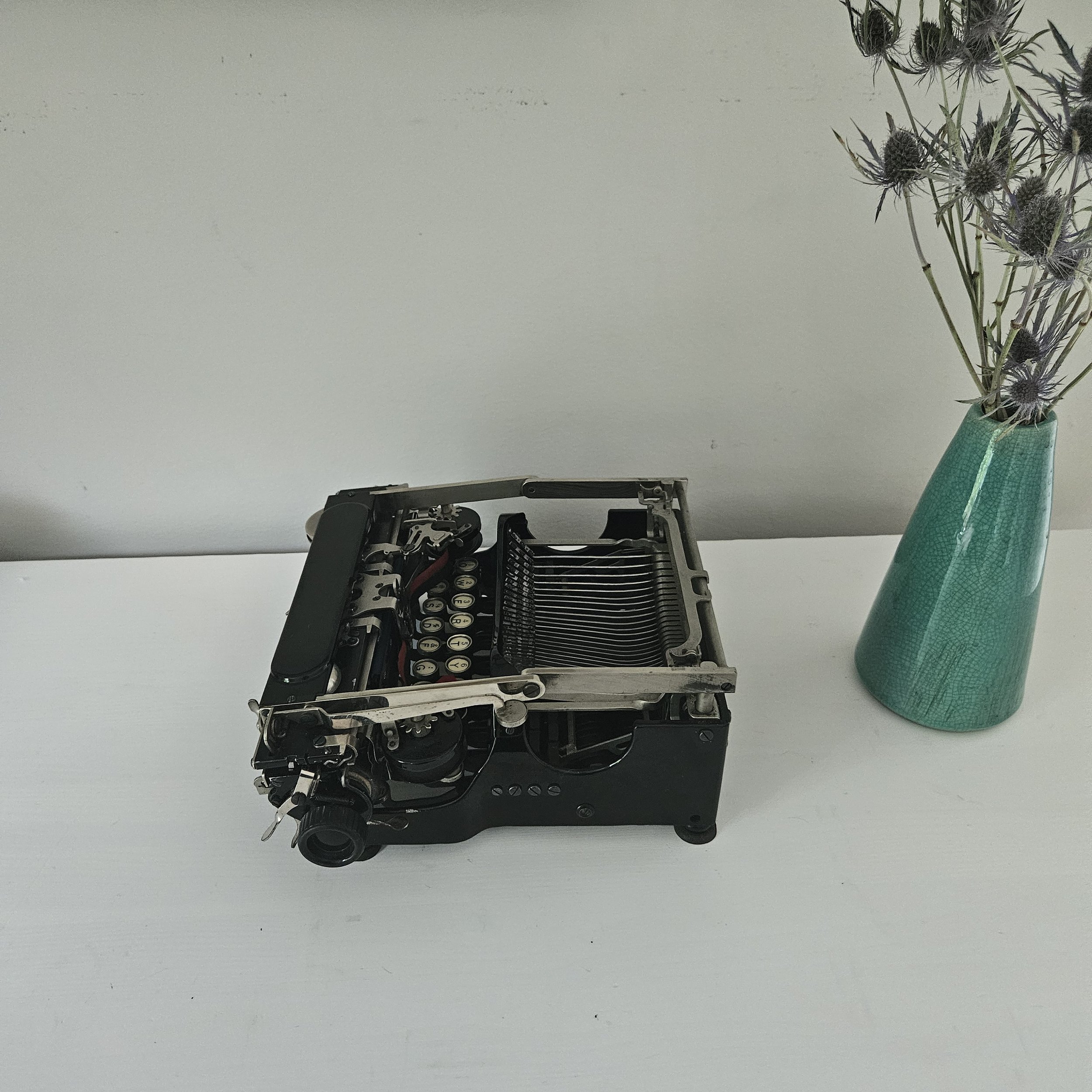


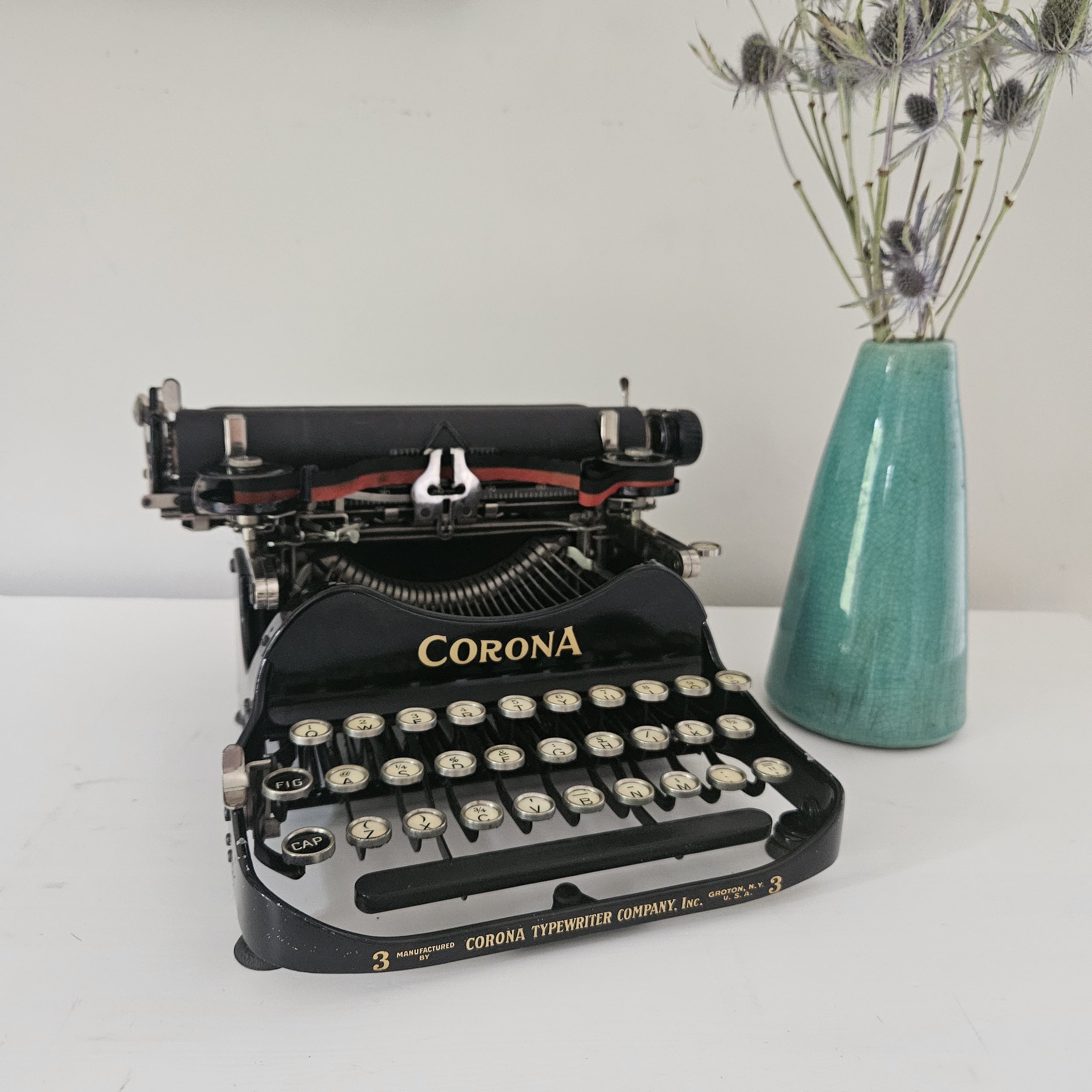
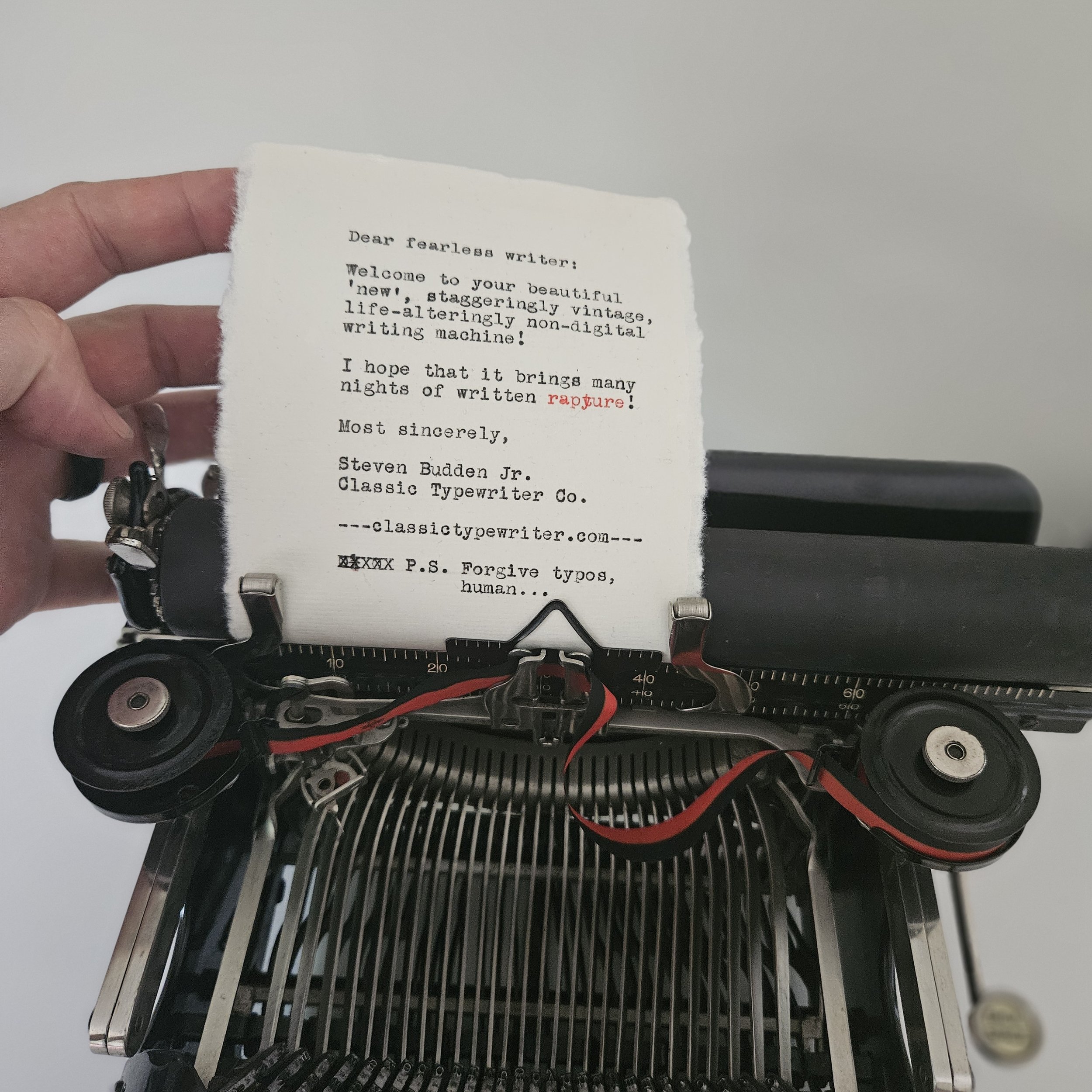
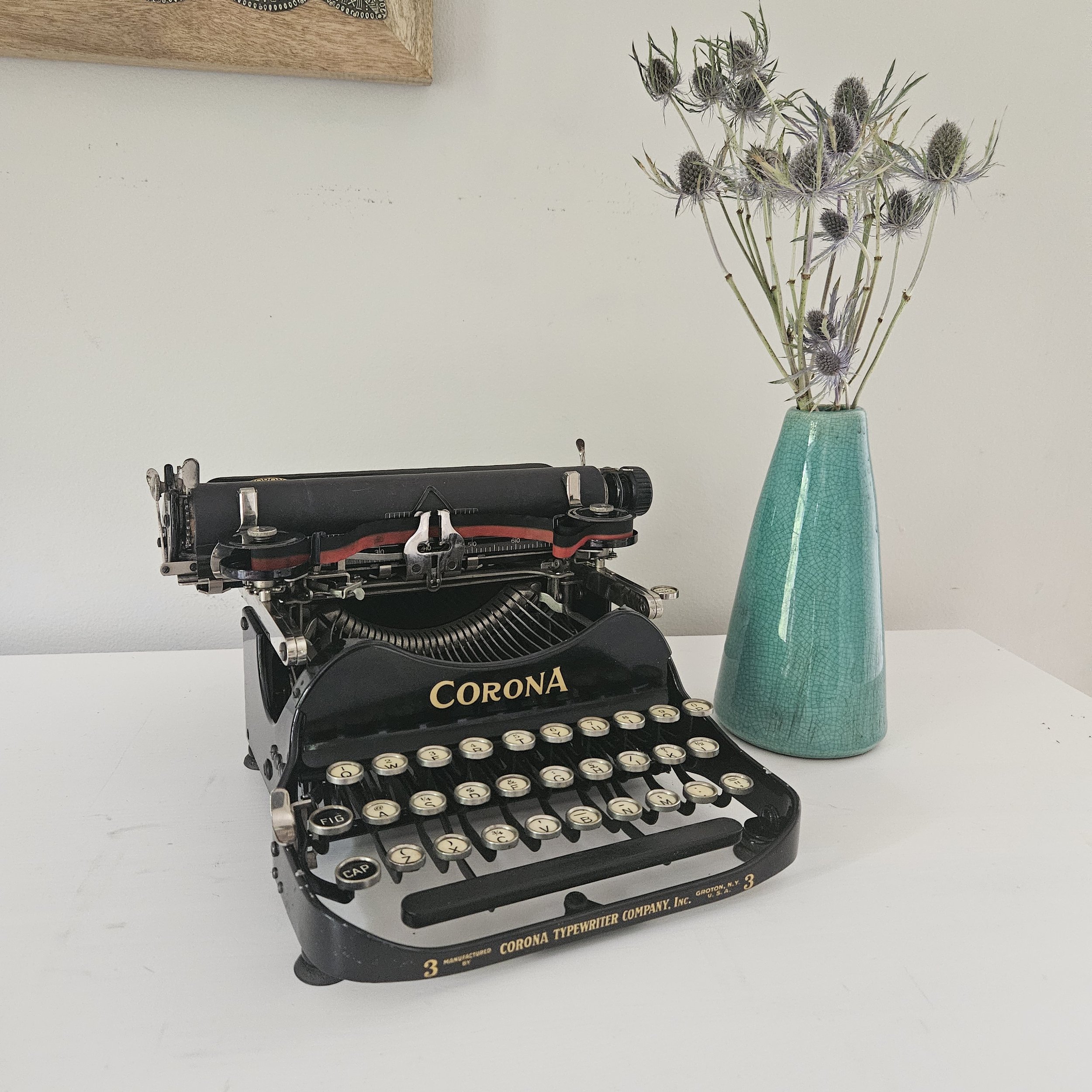

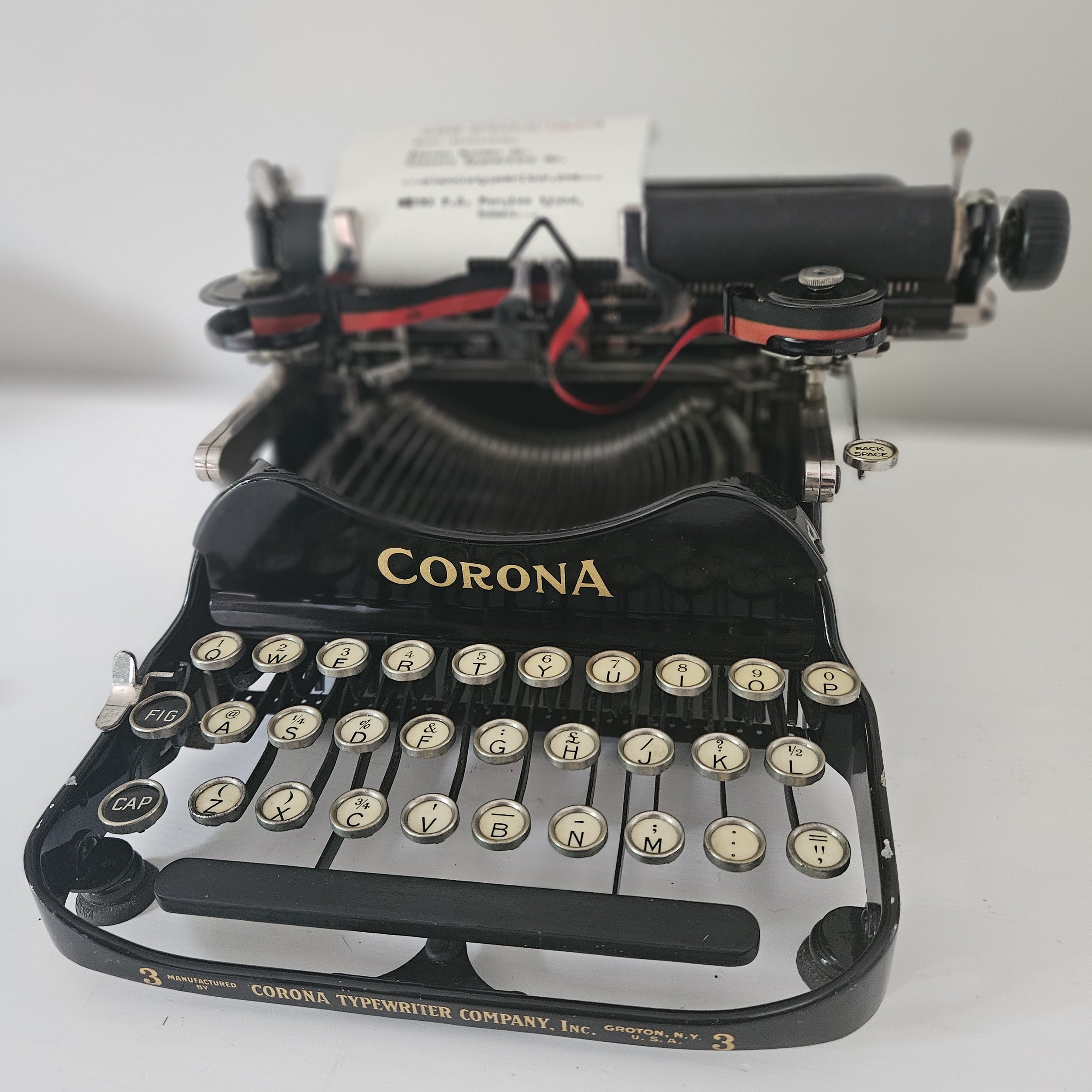
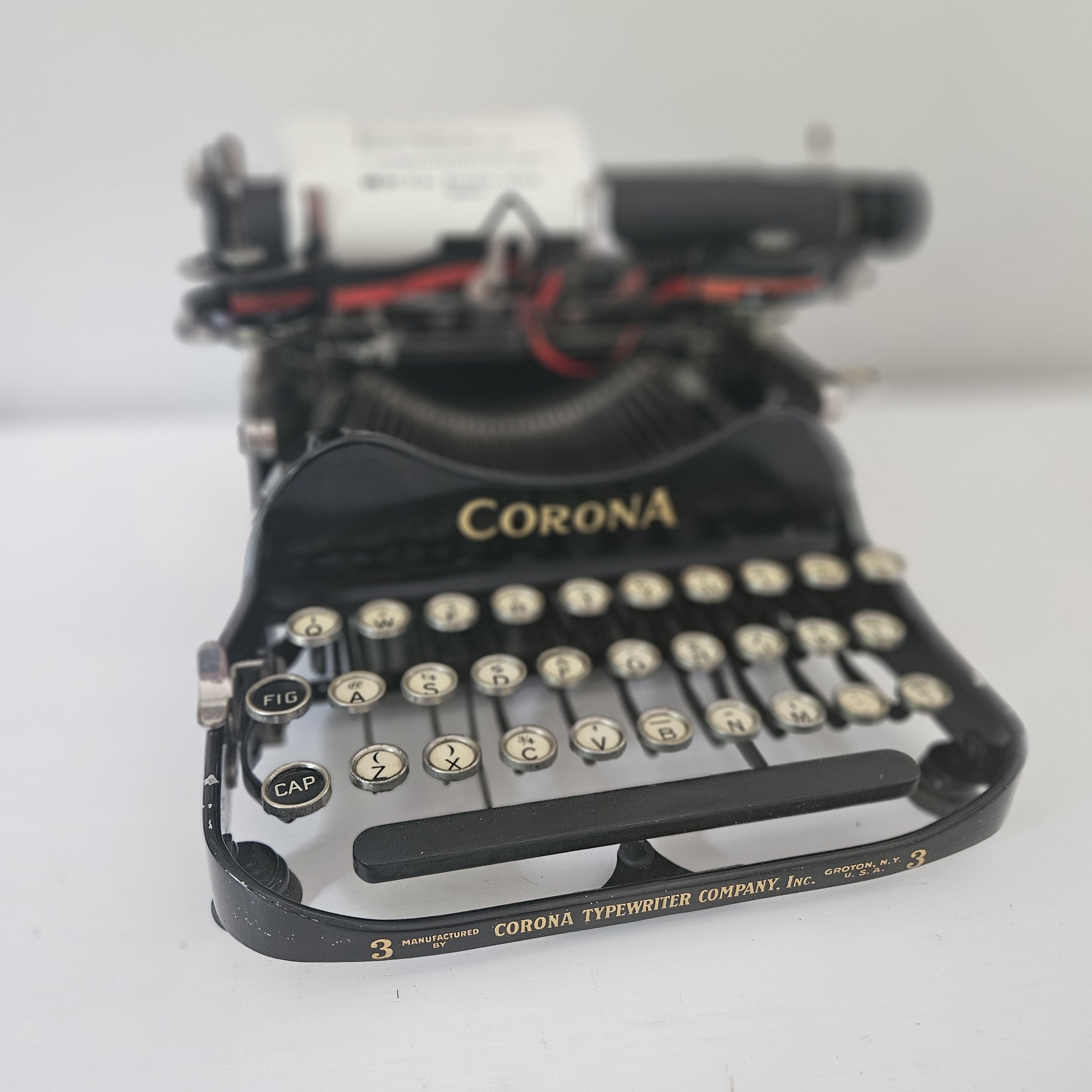

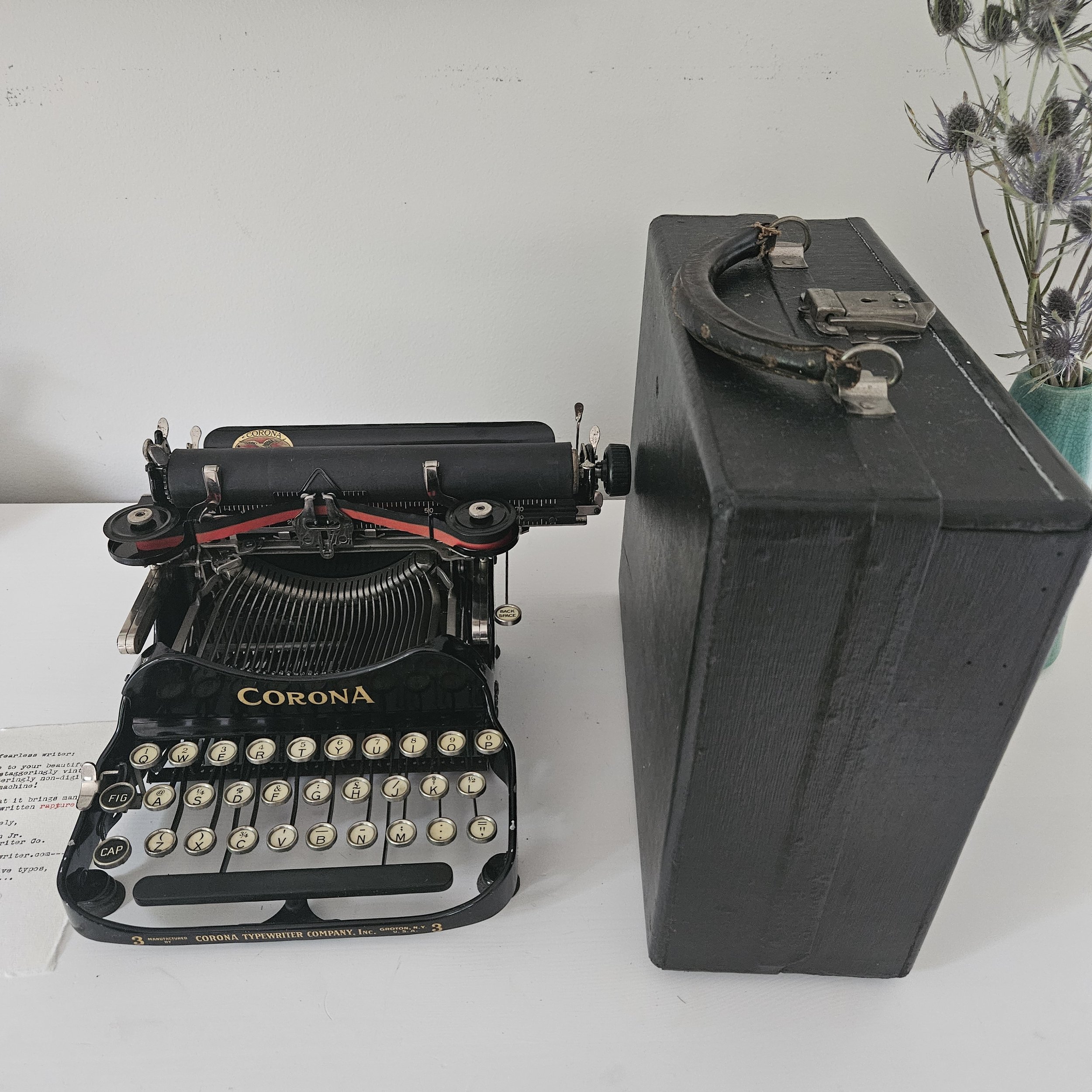
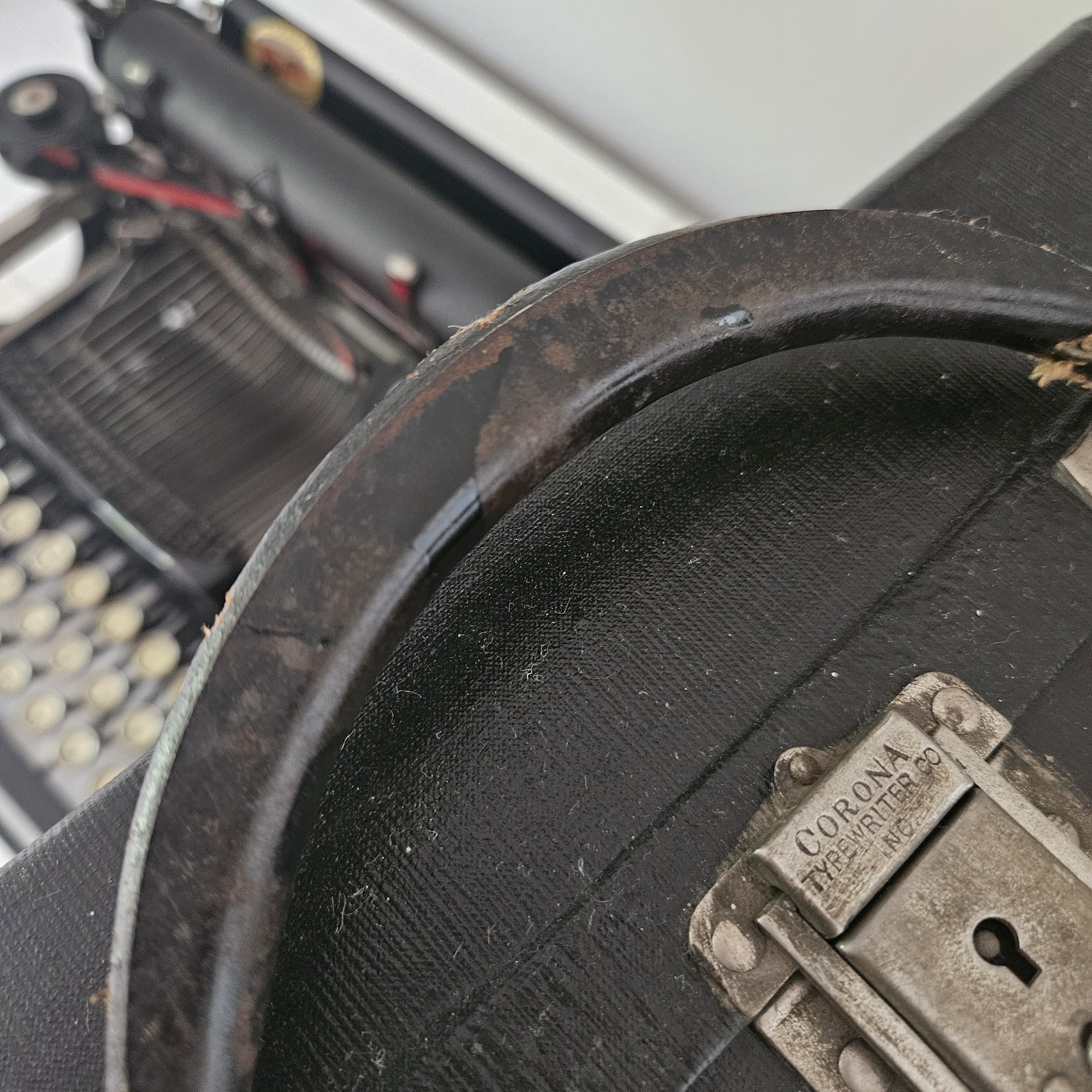

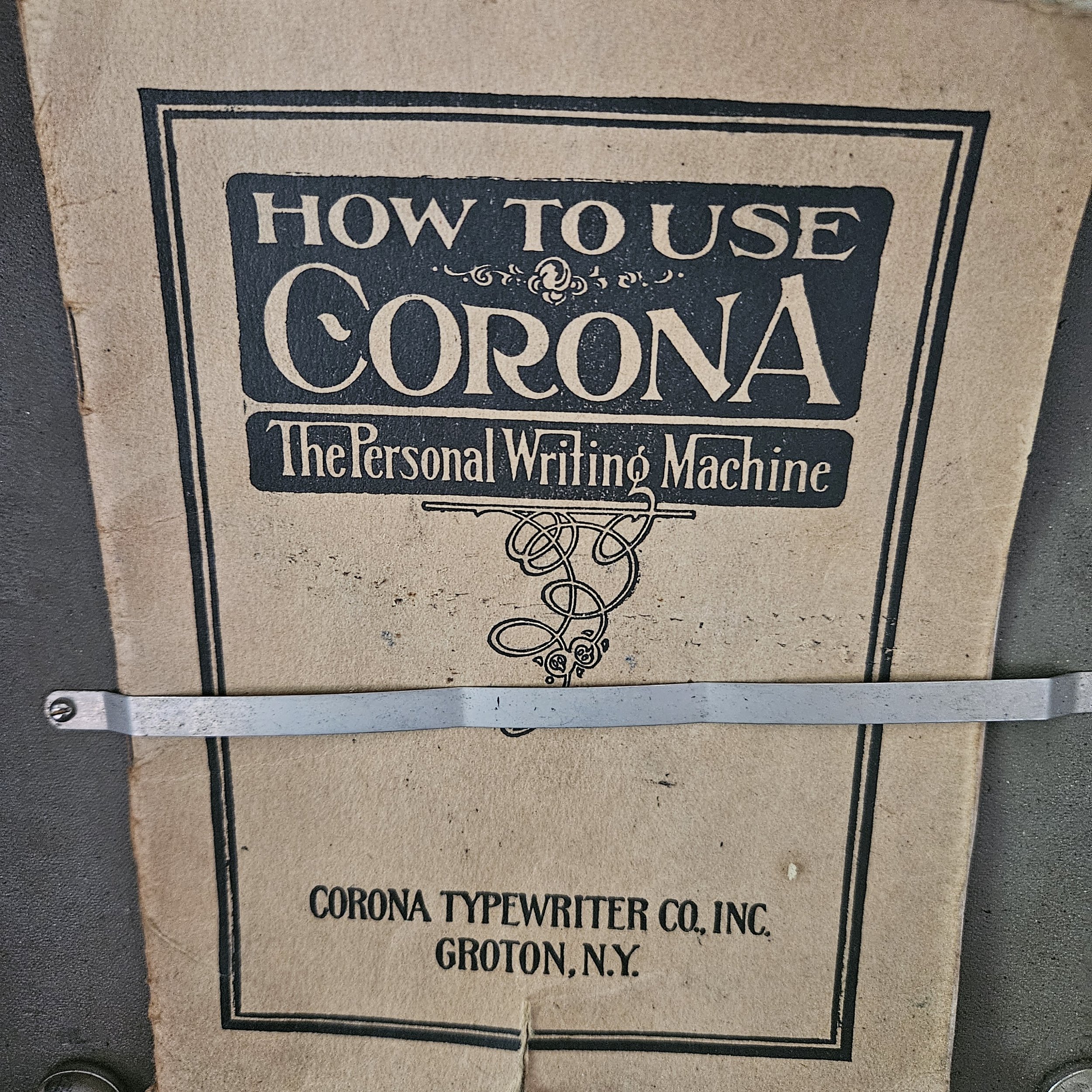

Stunning circa 1914 Corona 3 Typewriter with case
Order your Corona Three today, and you’ll get a stunning specimen of this model, shipped in about 2 weeks, in a case. These have the rubber replaced for typing efficiency. Though it won’t be the exact machines shown in the photos, it will be a working Corona Three in comparable condition with our 1-3 year warranty and lifetime trade in policy.
Corona 3 Typewriter Features:
Metal Body in Original Gloss Black
Nickel Plate Detailing
White Keys with Plated Escutcheons
Pica 10cpi Typeface
Margin Function
Case Size:
Width: 29 cm x Depth: 25 cm x Height: 12 cm
(One of early history’s smallest cases, due to folding mechanism).
This model was used by Lawrence Durrell, Agatha Christie, Hemingway, and others.
***
The Corona 3 typewriter, a renowned and influential writing instrument, has a rich history that spans the early to mid-20th century. It was introduced by the Corona Typewriter Company in 1912 and quickly gained popularity among writers for its compact size and portability.
Manufactured in a period that saw significant advancements in typewriter technology, the Corona 3 boasted a design that made it ideal for on-the-go use. Its small size and lightweight construction allowed writers to carry it easily, making it a favorite among journalists and authors who needed a reliable tool for their work while traveling.
The Corona 3 typewriter found favor with numerous famous writers of the time, including Agatha Christie and Ernest Hemingway. Agatha Christie, known for her gripping detective novels, reportedly used a Corona 3 for drafting her stories, while Hemingway, renowned for his concise and impactful writing style, also favored the portable Corona 3 during his travels. These endorsements from prominent authors contributed to the typewriter's reputation and popularity among aspiring writers and professionals alike.
With its compact design and renowned writers as enthusiasts, the Corona 3 typewriter became an iconic symbol of the early 20th-century writing process. Its legacy lives on as a testament to the intersection of technological innovation and literary pursuits, reminding us of the tools that shaped the craft of writing during a transformative era in communication technology.
***
Please let me know if you have questions. writeon@classictypewriter.com
Most sincerely,
Steven Budden Jr.
Classic Typewriter Co.
Chapel Hill, North Carolina
RESOURCES
